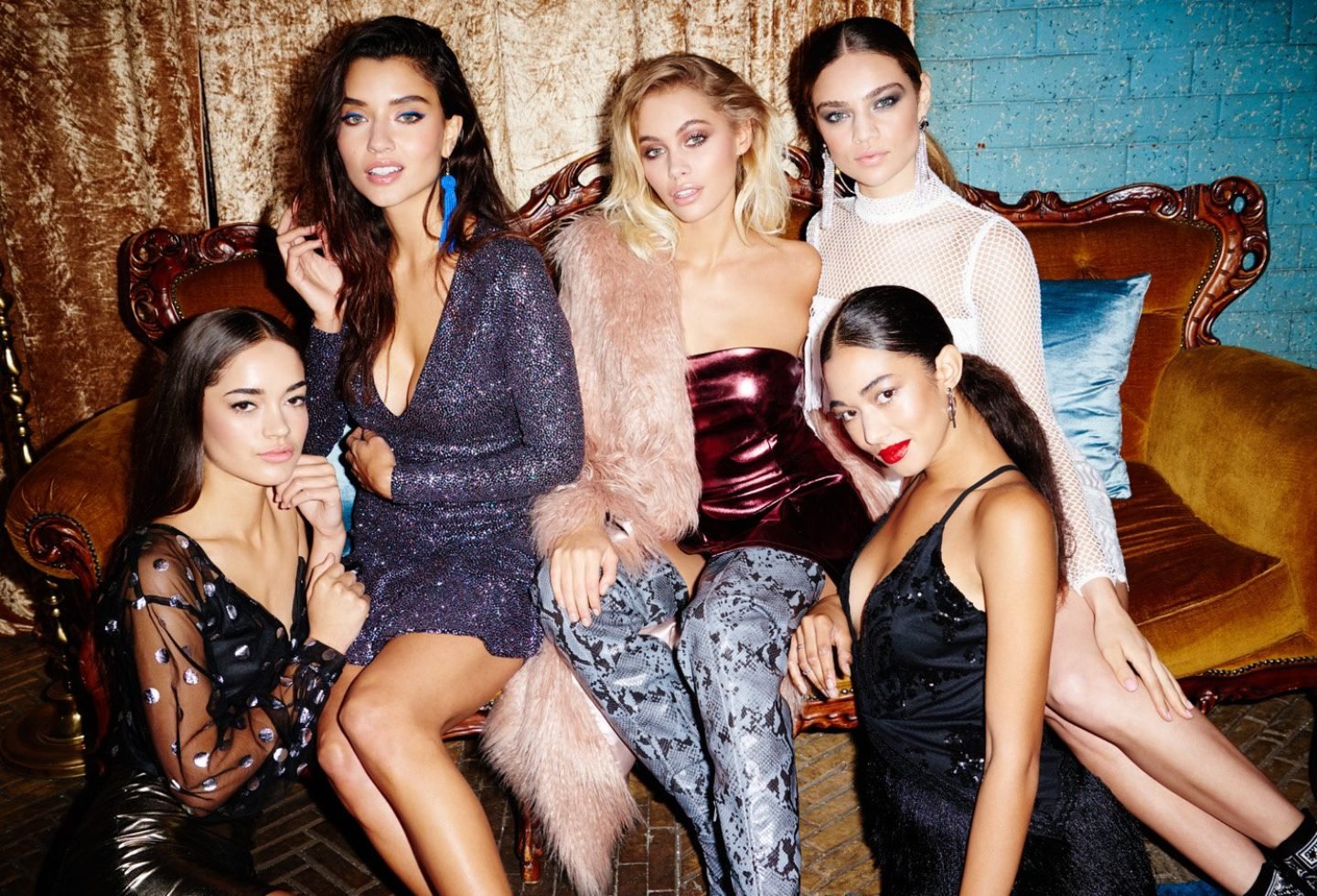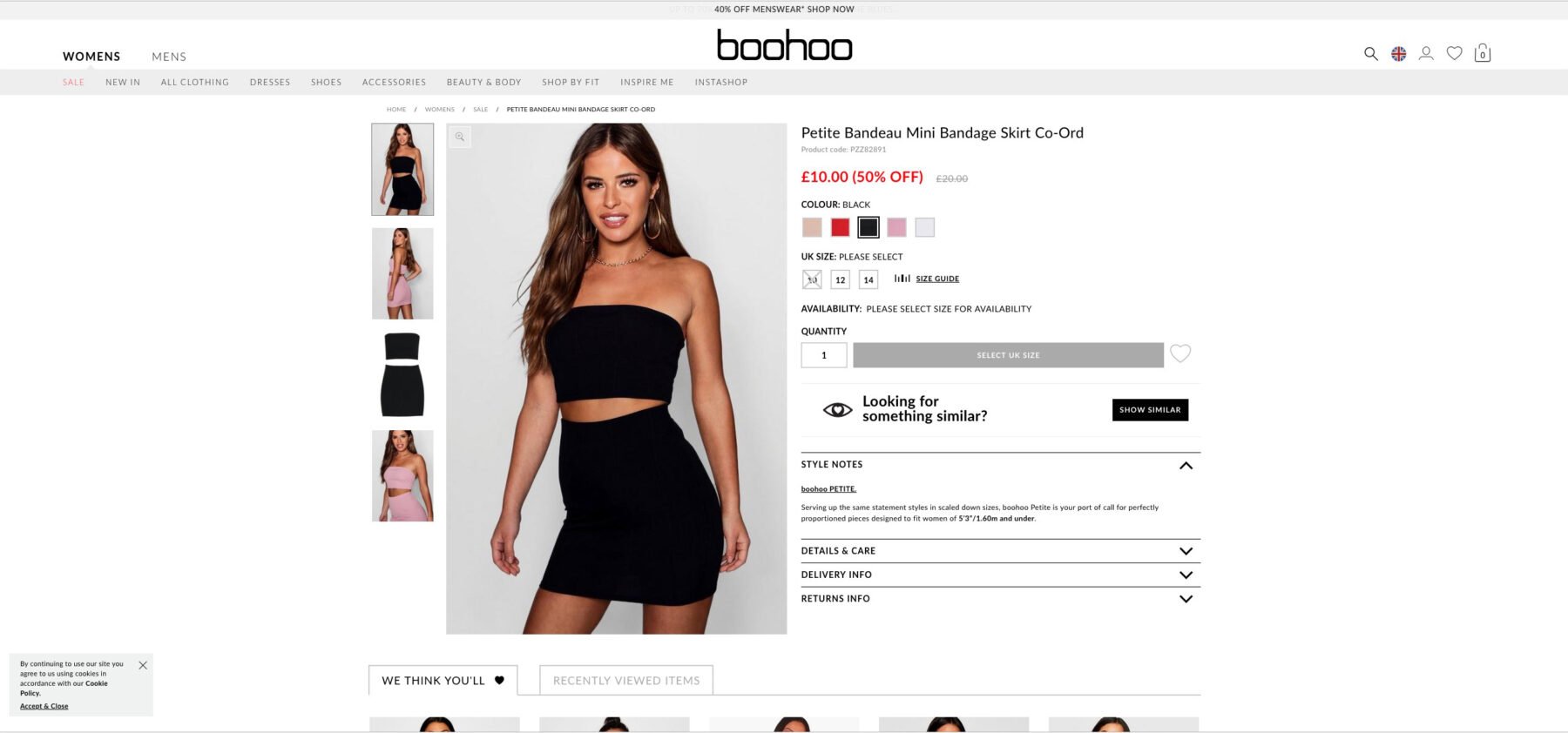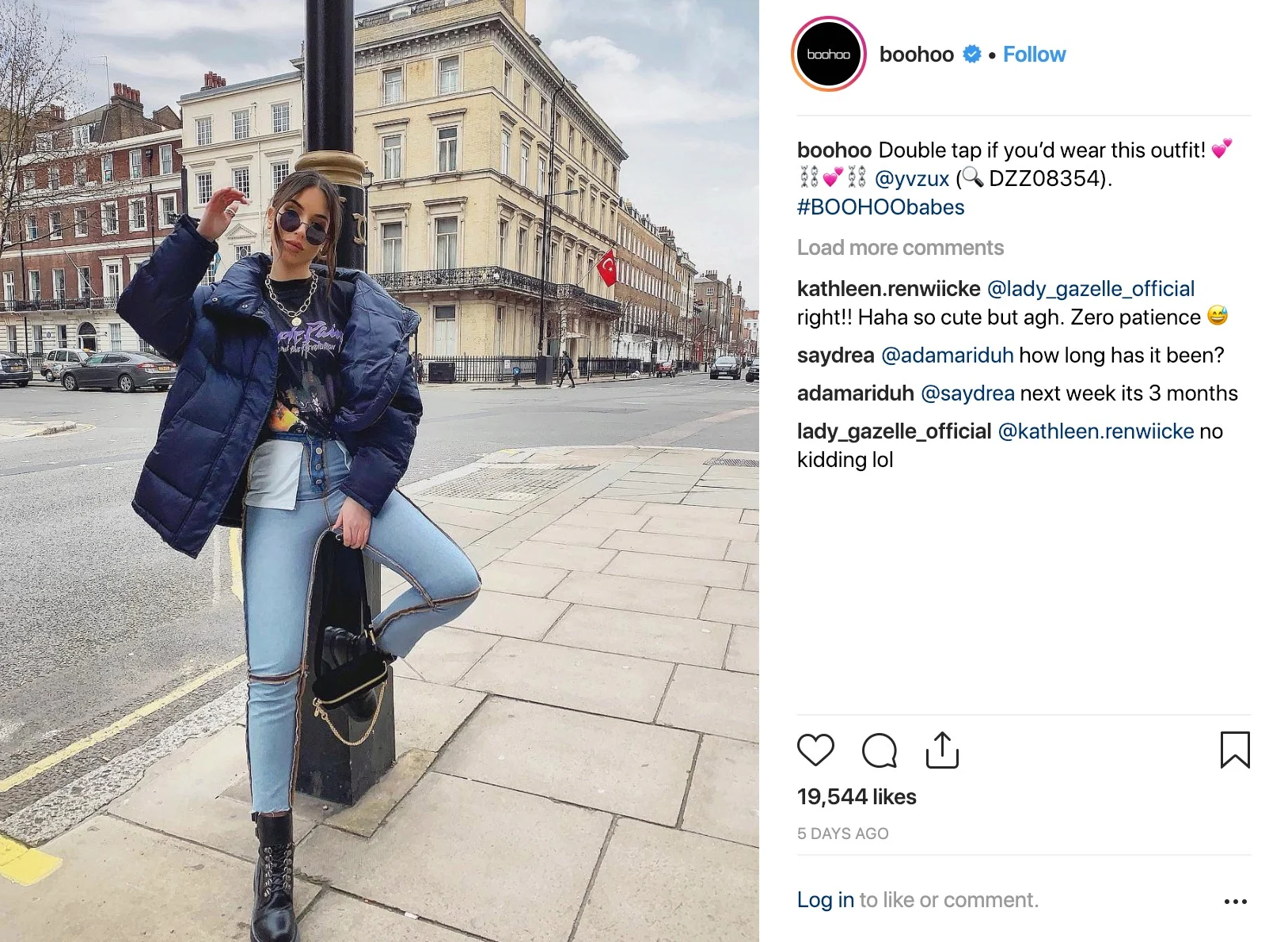How Boohoo have cornered the ‘fast fashion’ online market.

It reported pre-tax profits of £43.3m for the year to February, which met analysts’ forecasts and represented a 40% increase on the previous year, with revenue almost doubling.
And it announced in mid-January that sales in the four months to December 31 rose by 44%, compared with a year earlier, to £328m.
So, while retail sales in the UK continue to fall, and other online outlets struggle to keep interest, why is Boohoo head and shoulders above the rest?
A major draw for online consumers is undoubtedly Boohoo’s dedication to fast-fashion – focusing on low prices and high turnover.
Unlike ASOS, which is well-known for carrying a broad and expansive range of designers at a higher price point, Boohoo focuses on stocking key seasonal trends at low prices. While 11% of ASOS products are in the £5 to £9.99 category, this rises to 23% for Boohoo, which offers full garments for such cheap prices.

With consumer expectations rising, and millennial shoppers developing an ‘I want it now’ mindset, Boohoo’s business model enables it to deliver a rapid and continuous cycle of affordable fashion trends that its target audience is desperate to attain.
This ‘test and repeat’ strategy allows Boohoo to quickly find out what items are selling online before ordering and stocking more. All while fulfilling the needs of its millennial target market.
Google suggests that 68% of teenagers now shop via their smartphone, while 63% of millennials are said to shop on their mobiles every single day.
Unsurprisingly, two-thirds of online visits to Boohoo come from mobile, with the retailer subsequently taking steps to ensure that its user experience is as slick and seamless as possible.
In 2016, it launched apps in international markets as well as a new and improved version for the UK. With features such as ‘Wishlist’ and account settings perfectly aligning with the mobile experience, browsing on the app is as easy as it is online, with added convenience and often, added discount as an incentive to shop via the app.
According to research, budgets for Influencer Marketing were predicted to increase by 39% last year, making the growing importance of this industry very apparent.
It’s no surprise that influencer marketing has been harnessed and perfected by the Boohoo brand. From producing clothing lines with various celeb stars including Paris Hilton and Gemma Collins to gifting Love Island contestants’ items to wear on the show, Boohoo knows exactly how to use the power of influence to advertise, especially to its ever-impressionable target market.
The retailer has also partnered with multiple big-name influencers to promote products on social media platforms, most prominently, Instagram.

Resonating heavily with target audiences, the use of ‘#BoohooBabes’ (an apt title for Boohoo’s influencers) works well for the brand due to the large following, good looks, and aspirational lifestyles of the influencers.
People are happy to take recommendations from their peer group, so when a brand is being endorsed by someone who has a large fanbase and loyal followers who value what content they’re creating; having them endorse or mention your brand can go a long way, and it shows! Plus, with personalised discount codes, Boohoo can track and measure the success of each influencer campaign to see if and how it’s working effectively.
The idealised body image for women to attain has never been more prolific than within the fashion industry.
Challenging the images of super-slim, super-edited models plaguing fashion sites, Boohoo has started advertising products using models with a variety of body shapes and sizes, for which it has received raving praise.
A recent campaign even features models with stretch marks and unedited skin.
In response, one shopper tweeted: “Well done @boohoo for not feeling that this gorgeous girl’s stretch marks had to be airbrushed out. Glad to see some normality favoured over the usually idealised image.”
Recognising the shift in what consumers want to see when it comes to beauty – especially among Millennials and Generation Z – Boohoo has once again fed into the desires of its target audience, positioning itself as a socially responsible brand that empowers women of every shape and size.
Online fashion aimed at young women is currently the sweet spot in a tough fashion market because low prices keep wardrobe updates within reach of even the tightest budgets.
The success comes down to a series of tactics. Boohoo uses terms like ‘sick’ and ‘fire’ alongside expletives and puns that speak to a very specific age-group. It also chooses some of the world’s biggest ‘It’ models as campaign stars, helping to speak to post-Instagram girls.
Boohoo’s dedication to fast-fashion suits the needs of its demographic to a tee, providing them with the celebrity trends they want, at a price they can afford.
Understanding its target persona has allowed this fashion brand to go from strength to strength year on year, and you can do the same.
If you’re looking to create a joined-up campaign that’ll pack a punch, and an e-Commerce site that converts orders, Purpose Media can help.
We’ll help you to see the world through the eyes of your customer, developing brand messaging that attracts and a website that wins business.
Why not pop in for a cuppa?